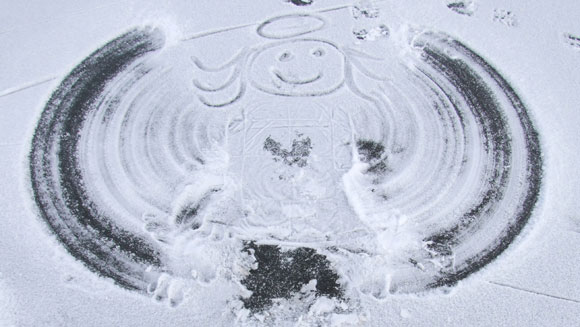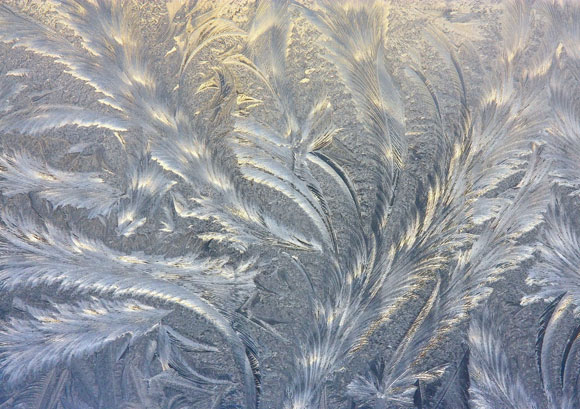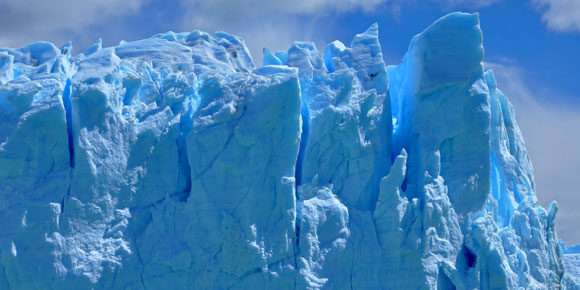
There are many moods and meanings to the season of Winter. The weather and the darkness affect our feelings. The rhythm of our lives changes, and we spend more time inside savoring the warmth. We relish the chance to slow down and to have some solitude.
We in the north are used to plunging temperatures, slush and snow, and snowplows on city streets and slippery highways. But there is also the other side of Winter: its pristine beauty and its many opportunities for playfulness.
The great Christian monk Thomas Merton once compared the spiritual life to the search for a path in a field of untrodden snow: “Walk across the snow and there is your path.” To encourage you to explore the many parts of this path, we have designed a month’s worth of practices. As a first step, we invite you to reflect upon a two galleries of winter wonders:
1. Make Severe and Inconvenient Weather into an Adventure
In How to Be Happier Day by Day: A Year of Mindful Actions, Alan Epstein writes about the spiritual practice of being grateful for all kinds of weather — even the kind of winter weather that inconveniences us:
“Look forward to the approach of strong or unusual weather. Instead of griping when the days turn foul — snow, sleet, freezing rain, or rain with cold temperatures — see them as an exciting adventure, as a time when nature reminds you that she exists, that when it comes to the earth, it is her domain.
“Even a severe cold spell can be the source of pleasure if you are prepared for it, if you act accordingly and bundle up against the cold and wind. Can you recognize that we all live on a small, spinning orb held on course by the force of gravity among the nearby heavenly bodies, and that its position in the universe is very powerful, but ultimately also very fragile?
“See the changing weather as representative of all change. As the earth moves around the sun through the course of the year, the earth is tilted at an angle of twenty-three and a half degrees — which creates the seasons. Consider also that at one time the bulk of the planet was covered with ice, and that erupting volcanoes are manifestations of the active core of the earth. We, living our lives day to day, are as much a part of this universal system as the moon, a grain of sand, or the sweet smile on your child’s face when he or she wakes up from a two-hour nap in the middle of the afternoon.
“All phenomena — including bad weather — contribute to our experience of life. Don’t discriminate. Enjoy the adventure.”
The next time you hear a report forecasting strong and unusual weather make it your spiritual practice of the day to see it as an adventure rather than as a possible nightmare. See what a difference this reframing makes in our experience.
2. Take a Winter Count
The inimitable Robert Fulghum consistently opens doors and helps us see things afresh. In his blog (Nov. 28, 2010), he writes that the northern plains tribes of Native American Indians made it a habit to keep track of time and tribal history by placing graphic symbols on a large tanned buffalo hide. A village elder would mark the events in the community from the first snowfall of the year to the last. They called these collections of memorabilia “Winter Counts.” Create your own “Winter Count” as a kind of homemade history of what is going on inside and around your during winter. Feel free to include anything that strikes your fancy.

3. Let Winter Bring Out the Playful Child in You
Set the intention to do some playful things to celebrate the joys of winter by yourself or with friends. Playing around enables us to express ourselves, to savor pleasure and the lightness of being, and to imitate the Giver of life who created the world in play. Try one of these:
4. Celebrate Hospitality
Winter has special significance in the Christian tradition, write Gary Schmidt and Susan Felch in Winter: A Spiritual Biography of the Season:
“This is a season that, in making us aware of our individual vulnerabilities, encourages a communal understanding; the winter, with its incipient danger and threat, reminds us of those most vulnerable to such threats. So it is entirely appropriate that for Orthodox Christians, one of the hallmarks of the winter feasts is the celebration of hospitality. An ode sung at Compline on the third day of the Prefeast of Christmas proclaims, ‘Come, O faithful, / Let us enjoy the Master’s hospitality, / The banquet of immortality.’ For Christians, winter is the season in which God shows hospitality to humankind through the incarnation, but it is also the season in which we are enjoined to reflect that hospitality by opening hearts and hands to God and neighbor.”
People of all traditions can transform the isolation and chills of the winter season by offering hospitality to others through dinner parties. Try to invite somebody you don’t know very well each time. Find out what you can do to support the “hospitality” organizations that are providing food, shelter, legal, and financial services to homeless people, immigrants, and refugees.

5. Learn a Lesson from Frost
In Praying Our Goodbyes Joyce Rupp does a spiritually literate reading of frost:
“One winter morning I awoke to see magnificent lines of frost stretching across my window panes. They seemed to rise with the sunshine and the bitter cold outside. They looked like little miracles that had been formed in the dark of night. I watched them in sheer amazement and marveled that such beautiful forms could be born during such a winter-cold night. Yet, as I pondered them I thought of how life is so like that. We live our long, worn days in the shadows, in what often feels like barren, cold winter, so unaware of the miracles that are being created in our spirits. It takes the sudden daylight, some unexpected surprise of life, to cause our gaze to look upon a simple, stunning growth that has happened quietly inside us. Like frost designs on a winter window, they bring us beyond life’s fragmentation and remind us that we are not nearly as lost as we thought we were, that all the time we thought we were dead inside, beautiful things were being born in us.”
Frost can be a spiritual teacher for us if we just open our hearts and our minds to it. There are plenty of other winter wonders that can spur our imagination and send us on our way rejoicing. Look around you on a cold day and find your spiritual teacher.
6. Write a Winter Haiku
Jackie Hardy edited Haiku: Poetry Ancient and Modern, a collection of 500 poems from Japan, the United States, England, and Canada. A good haiku crams a great deal of experience into a few phrases and its reverberations swell out in all directions. Here are two examples from the book that deal with winter:
the cold night
comes out of the stones
all morning.
— Jim Kacian
chill night
first knocks
from the radiator.
— Maurice Tasnier
Try your hand at a haiku about icicles, wind, skaters, or some other aspect of the winter wonderland around you.

7. Pray for Our Ancestors the Glaciers and Act on Their Behalf
In The Future of Ice: A Journey into Cold, Gretel Ehrlich, a skilled nature writer, laments the loss of glaciers thanks to global warming:
“A glacier is an archivist and historian. It saves everything no matter how small or big, including pollen, dust, heavy metals, bugs, bones, and minerals. It registers every fluctuation of weather. A glacier is time incarnate, a moving image of time. When we lose a glacier — and we are losing most of them — we lose history, an eye into the past; we lose stories of how living beings evolved, how weather vacillated, why plants and animals died. The retreat and disappearance of glaciers — there are only 160,000 left — means we’re burning libraries and damaging the planet, possibly beyond repair. Bit by bit, glacier by glacier, rib by rib, we’re living the Fall.”
Say a prayer for humanity and the nations of the world to wake up and see the havoc being created by our pollution. For 20,000 years we have lived in “an interglacial paradise” and now we face the loss of these glaciers and the wildlife in the Artic regions. Continue your prayers by actively lending your support to groups working to halt the pernicious forces behind global warming.
Days 1 – 7 … 8 – 14 … 15 – 21 … 22 – 28
VISIT WEBSITE FOR MORE INFORMATION
Notifications
You can skip to the end and leave a response. Pinging is currently not allowed.